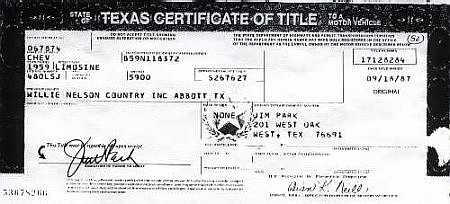|
Armbruster/Stageway was established in Fort Smith, Arkansas during the 1880's to fill the transportation needs of the American Pioneers moving Westward. |

Armbruster marks 100th Anniversary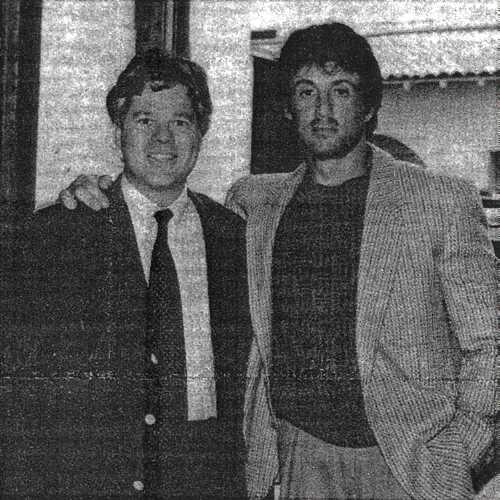 A hundred years ago, three Fort Smith men went into business together building and repairing horse-drawn wagons. After a century in which few things have changed as much as has transportation, that little business still exists. Armbruster/Stageway has changed as dramatically as the times, building now limousines and funeral coaches instead of sulkies and surreys, but it is there to mark its centennial - part of it in the same building it has occupied since 1887. Armbruster is marking the anniversary in a very quiet manner. Each car built this year bears a special "100 Years" badge below the Armbruster/Stageway shield that appears somewhere on the body. That shield will go on more than a thousand cars this year. Armbruster/Stageway is not only the oldest custom vehicle builder in the country, it is the largest, with almost a third of the total U.S. market and a decent chunk of the overseas business. King Olav V of Norway visits his holdings in an Armbruster limousine. In America, so does actor Sylvester Stallone, who gets them into his movies. Author William F. Buckley owns one and sometimes writes about it. The little Fort Smith company, owned since 1985 by publicly-traded NEOAX Inc. (Northease Ohio Axle), is concentrating increasingly on the world marketplace. Tom Earnhart, who followed his father and his grandfather to the helm of Armbruster/Stageway, quit the top job there recently to form a new company devoted to marketing its vehicles overseas. Even overseas, the Cadillac and Lincoln marques keep their aura of exclusivity after Armbruster works its magic on them. But its work is turning international. Mercedes-Benz cars are shipped to Fort Smith to be stretched and sent back to Europe; Armbruster recently turned several Toyotas into pocket limos. But when A.K. "Tommy" Armbruster, Charles Kayser and Walter Walkord got together to repair and build horsedrawn wagons in 1887, the international balance of trade was the furthest thing from their minds. None of them would ever see the king of Norway or Arab sheiks riding in their handiwork, but one, at least, lived to see the dawn of today's company 63 years later. Though founded before the days of the internal combustion engine, Armbruster & Co. slid easily and naturally into automobile repair. But its entry into the conversion business was a chance thing. Sometime in the early 1920s a local bus company, Jordan Bus Lines, asked if it was possible to stretch a car into a small bus, one they could drive profitably on short runs to nearby towns. Armbruster gave it a shot and by the best guess available finished the first stretch coach in 1923. They kept up the customizing business for the next quarter-century, building about 20 cars a year. Kayser died and Armbruster retired in 1949, 62 years after they started the company The business, it's original 10,000 square-foot shop on North Ninth Street, and its six employees went to a Cincinnatti businessman named Ed Robben and his on-in-law, Milt Earnhart, who later became a state senator from Fort Smith. They took over on May 1, 1950. In 1966, after Robben's death, Armbruster merged with Stageway Coaches, a dealer originally from Cincinnatti that had handled the majority of the limo builder's sales since the 1950s. Spurred by a major advertising campaign led by Tom Earnhart and the establishment of a national dealer network, Armbruster enjoyed its greatest growth in late 1970s and into the 1980s. Today, some 200 employees work in the original North Ninth Street factory and a modern, 80,000-square-foot plant on South 28th Street. More expansions are planned. 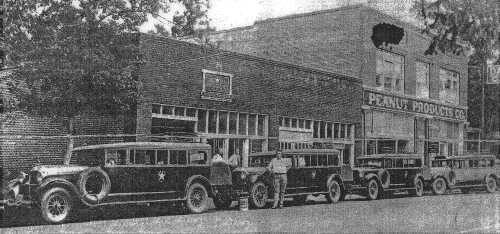 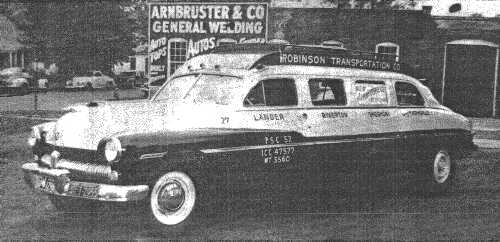  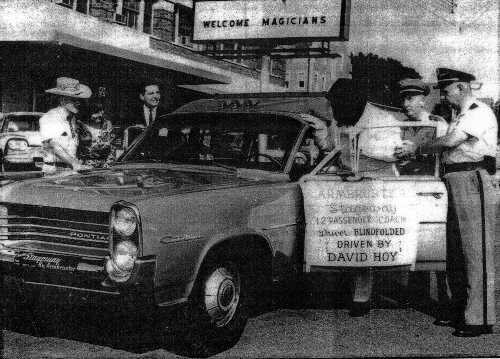  |
|
The Department of School History is interested in acquiring either type of wagon to display at the MHS Heritage Center. If you have any information about the location of one, please contact Susan at (717) 520-2010 or algers@mhs-pa.org. Yellow school buses are a familiar sight on the roads taking students between home and school in any locale and it is the same in at The Milton Hershey School. The private residential school in Hershey, Pennsylvania serves children between the ages of four and fifteen who come from families of low income, limited resources, and social need. 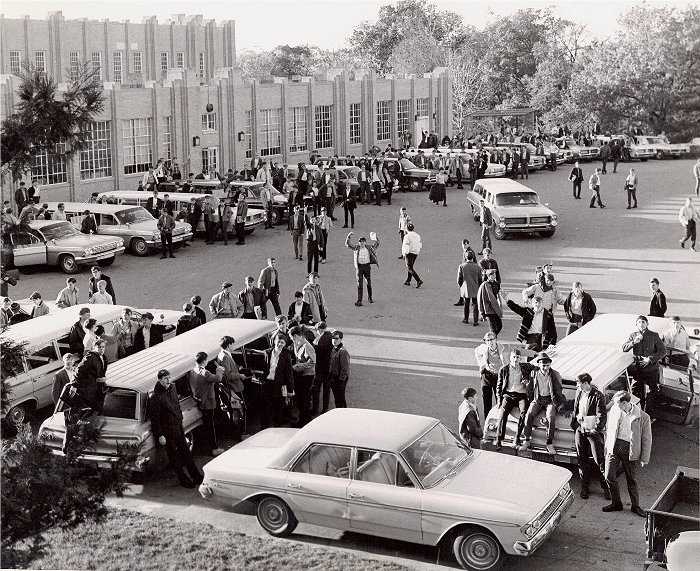 To enhance the family home concept, in 1962 modified station wagons designed to hold fourteen students were ordered for intermediate level student homes. The vehicles were regular Chevrolet Biscayne wagons that were sent to Stageway Coaches to be modified into fourteen passenger vehicles. The wagons were cut in two, an additional seat was installed, and then the frame and body was re-welded. In an article from the April 1962 issue of the student produced Spartan, it states that “each station wagon, similar to a family car, is equipped with power steering, power brakes, three-speed transmission, and a 250 horse-power V-8 engine.” The fourth and fifth seat folded down so to allow meals could be transported from the central kitchen to the student homes. When asked about the new station wagons in 1962, the School Superintendent stated that the change in transportation "brings to a fuller realization the family organization of homelife created here." 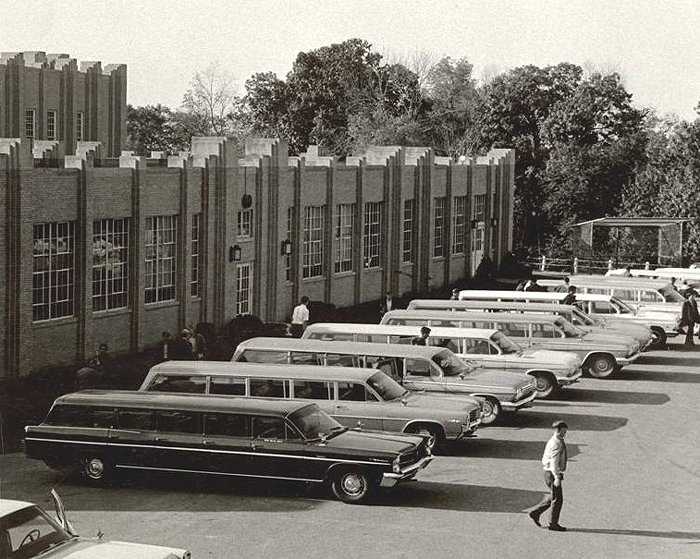 One alumnus remembers that the station wagons were a welcome addition. Because each home had their own transportation, there was no more waiting for a bus that was shared by two student homes. The rear facing back seat was the prime spot to ride and was claimed by seniors. The students called the cars “cattle wagons.” Later, they were called “limbo wagons” because of the swinging feeling that came from riding in the rear seats. It was discovered that the wagons were too light for the older boys, so in 1968 heavier Pontiac Catalina wagons were ordered and converted by Ambruster/Stageway Coaches. The wagons were fazed out in the mid 1980’s and replaced by the nine passenger vans that are used today. 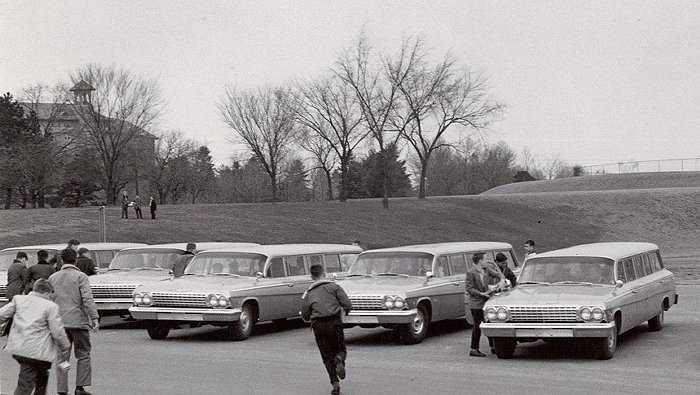 The mission of the Milton Hershey School remains true to the ideas upon which it was founded in 1909: to nurture and educate children in social and financial need to lead fulfilling and productive lives. The Department of School History actively collects, preserves, and interprets the history of Milton Hershey School. For more information about Milton Hershey School and its history please visit us at www.mhs-pa.org. 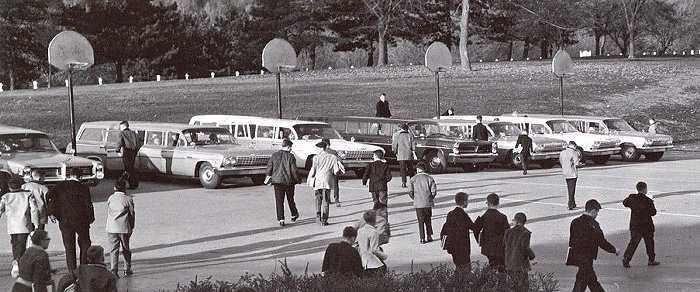 |

|
